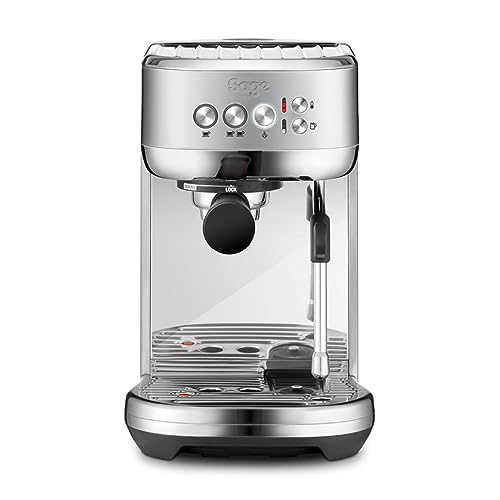Coffee and Espresso Machines
Espresso machines use pressure to force water through finely ground and tamped coffee beans. They produce a rich, delicious brew.
visit the following page recommend models that brew at 9 bars minimum to ensure a perfect extraction. Beware of brands that advertise greater pressure than what is necessary.
Types
The espresso maker, also referred to as a coffee and espresso maker, produces the concentrated, higher-quality coffee that you like in your favorite café drinks with an average of 9 bars of pressure. These machines have many options, such as the ability to control temperature and brew strength, programmable brewing and various drink sizes. Certain machines might come with steam wands with either manual or automatic settings for creating texturized milk for Latte art. They are available in three primary kinds of espresso machines comprising semi-automatic, automatic and super-automatic models. Each one has its own level of supervision and control.
Semi-automatic espresso machines are most sought-after for specialty coffee shops. Semi-automatic espresso machines offer baristas complete control over the brewing process, however they are not as user friendly as fully automatic or automated machines. You must still grind beans, fill and tamp the portafilter, and adjust the extraction duration to ensure the highest espresso shot of the highest quality.
Automatic machines come with an integrated mill that can measure and tamp your grounds. They automatically pour the correct amount of water required to extract the espresso, and often come with a programmable drink size function. In our tests in the lab, they were the most popular kind of espresso machine. They offer a great combination of consistency and manual control.
Functions
You'll need a reservoir hold the water that you use for making coffee, whether you select a steam-driven or pump-driven machine. You'll also have heating elements that heat up the cold water to produce the pressure necessary to extract coffee from ground.
When the button to brew is pressed to brew, the water inlet valve is sealed to ensure that only hot water under intense pressure can pass through the portafilter, and then into the ground coffee. The water takes about 25 seconds to turn into espresso.
The hot-water tubing, also known as the insulated tube runs from the reservoir to the spout at the top of your machine. The heating element of resistance is responsible for heating the water as the water flows through the aluminum tube and metal warming plate.
When the spout has been activated, you'll put your cup underneath the spout in order to capture the espresso as it flows through the portafilter to your cup. The coffee maker is also likely to have a steam wand which you can use to heat and froth milk to make drinks that are espresso-based, such as cappuccino or the latte.
Automated machines eliminate the guesswork of making coffee. They are easy to use, programable, and can measure and grind beans, as well as the tamping down process. In our Lab tests they tend to perform best because they are easy to use and do not require a lot of user skills.
Materials
Inside an espresso machine there's a maze of copper tubes and stainless steel boilers. There's also an intelligent software. They may seem complicated however, at the heart they do just one thing: push hot water through coffee that has been finely ground.
When choosing an espresso maker, think about size and space requirements, drink options, energy-saving options, and brewing precision. Also, look for a steam knob which will activate the steam wand, which is used for frothing milk and creating Latte art. A pressure gauge on the front of the machine lets you know the boiler's and pump's operational pressure. It is recommended to look for a coffee machine that has two needles in order to determine the maximum and minimum pressure.
If you're looking for more then only espresso, choose the machine that comes with different sizes of brew. This includes the ristretto. There are models that have an hopper that can be removed for effortless, easy frothing and the ability to easily change between different types of milk. If you're suffering from hard water, you should choose a model with an integrated water softener to prevent mineral buildup and keep your espresso tasting fresh.
Certain manufacturers employ a PID (proportional, integral, digital) thermostat to maintain a certain temperature range for espresso making. This makes sure you get a top-quality espresso cup each time. This feature also reduces expenses for energy as the machine only functions when needed.
Maintenance

As coffee and espresso machines become more widely available for home use, the proper maintenance of these machines becomes even more crucial. The most efficient equipment can make a an enormous difference in the quality of your coffee however only if it's maintained.
Regular maintenance and cleaning should consist of everything from cleaning the group head, steam wand and water filter to decaling and changing the water filters regularly. If you make between two and five cups of coffee per day, it is recommended to clean the machine's main parts once a week. Certain parts of the machine will require cleaning every two to three weeks, like the water tank and grinder.
You should also backflush your machine each week. This involves locking the portafilter into place and running the brew cycles several times. This can help to eliminate any stray coffee grounds or oils that are left behind. You can also use a brush or cleaner designed specifically for espresso machines to clean the portafilter.
Maintaining your espresso and coffee machine correctly will also make it last longer. Many professional espresso machines in cafes and offices cost a lot of money, and it is critical to keep your machine in good order to last for as long as is feasible.
